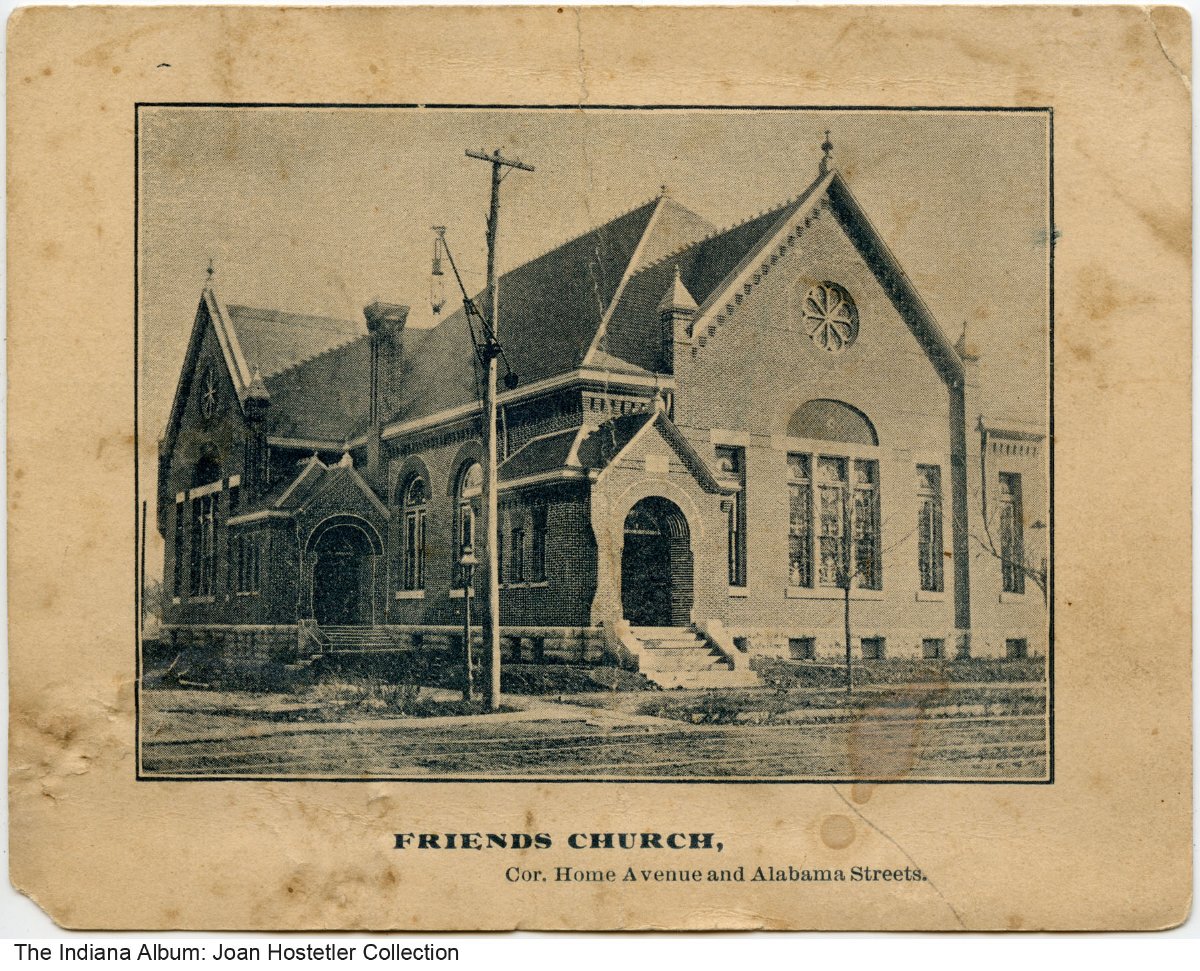The Quakers are among the few religious sects with roots in the turmoil of the English Revolution of the 1640s that have survived to the present. Until the late 19th century, they were distinctive in many ways: their repudiation of pastoral ministry in their “meetings for worship,” their advocacy of the equality of women, their plain style of living, and their belief in the “Inward Light”—that each soul had a certain measure of divine light that, if heeded, would lead to salvation.

In the early 19th century, thousands of Quakers moved into Ohio and Indiana, mainly from Virginia and North Carolina. William Townsend was apparently the first adherent in , arriving in 1820. The main Quaker settlements, however, were in . Friends founded six different congregations there between 1825 and 1859. Quakers also settled in southwestern during the early 1830s, establishing the towns of Bethlehem (now ) in 1833 and in 1834.
Beginning in 1827-1828, nearly two-thirds of the Friends membership affiliated with a group that came to be known as “Hicksite,” named after New York minister Elias Hicks. Hicksites emphasized the role of the Inward Light to guide individual faith and conscious. The remaining one-third espoused beliefs about Christ and Scripture that were essentially Protestant. This group became known as “Orthodox.” This theological split had little impact here. Virtually all Indiana Friends were Orthodox.
A short-lived meeting appeared in Indianapolis in 1834. Friends founded another in 1855, the origin of Indianapolis First Friends. They built a meetinghouse at Delaware and St. Clair streets, with a school adjacent. Indianapolis First Friends were involved in traditional Quaker reform efforts, especially prison reform and human welfare. They established the in 1869. The orphanage was the only one in the state that cared for African American children, and one of a handful in the country.
In the 1870s, the introduction of revivalism and the end of the plain life led to the separation of a few conservative members. In 1891, another meeting, later known as West Indianapolis and Second Friends, was established in the city. In 1896, First Friends opened a new meetinghouse at 13th and Alabama streets. In 1892, 1897, and 1902, First Friends hosted national conferences of Friends, the last of which founded the Five Years Meeting, the first national Quaker organization with legislative powers.

The 20th century brought changes. Friends adopted pastoral worship and became outwardly indistinguishable from most other Protestants. The rural meetings in Decatur Township slowly declined. First Friends grew steadily, coming to be recognized as one of the nation’s most important Quaker congregations and attracting leading Friends such as David M. Edwards (1872-1939) and Errol T. Elliott (1894-1992) as pastors. In 1956, it followed a number of other downtown churches to the north side. Other area Friends, such as Edward D. Evans (1862-1944), Alvin T. Coate (1870-1955), and the brothers Sumner A. Mills (1895-1984) and Howard S. Mills Sr. (1898-1994), achieved international reputations in Quaker affairs.
Since 1950, Indianapolis Quakers have become more diverse. Some have become fundamentalist in sympathy, others more liberal. In 1959, a small group split from First Friends because of the congregation’s refusal to accept a Black member and formed Lanthorn Meeting, an unprogrammed group (a group with no minister), which dissolved in 1989. In 1979, another unprogrammed group, North Meadow, formed. It became a center of controversy in 1988 when it began to celebrate same-sex marriages. Probably the best-known Quaker in the Indianapolis area in the early 21st century is Phil Gulley, the author of numerous works both of religion and fiction, and the pastor of Fairfield Friends Meeting near . There were approximately 600 Quakers in Marion County in 2022.

Help improve this entry
Contribute information, offer corrections, suggest images.
You can also recommend new entries related to this topic.